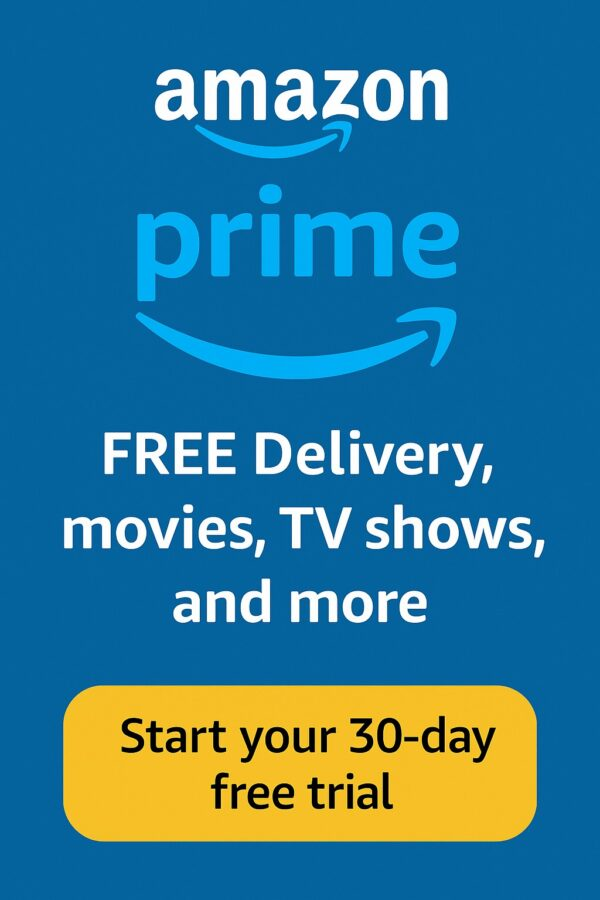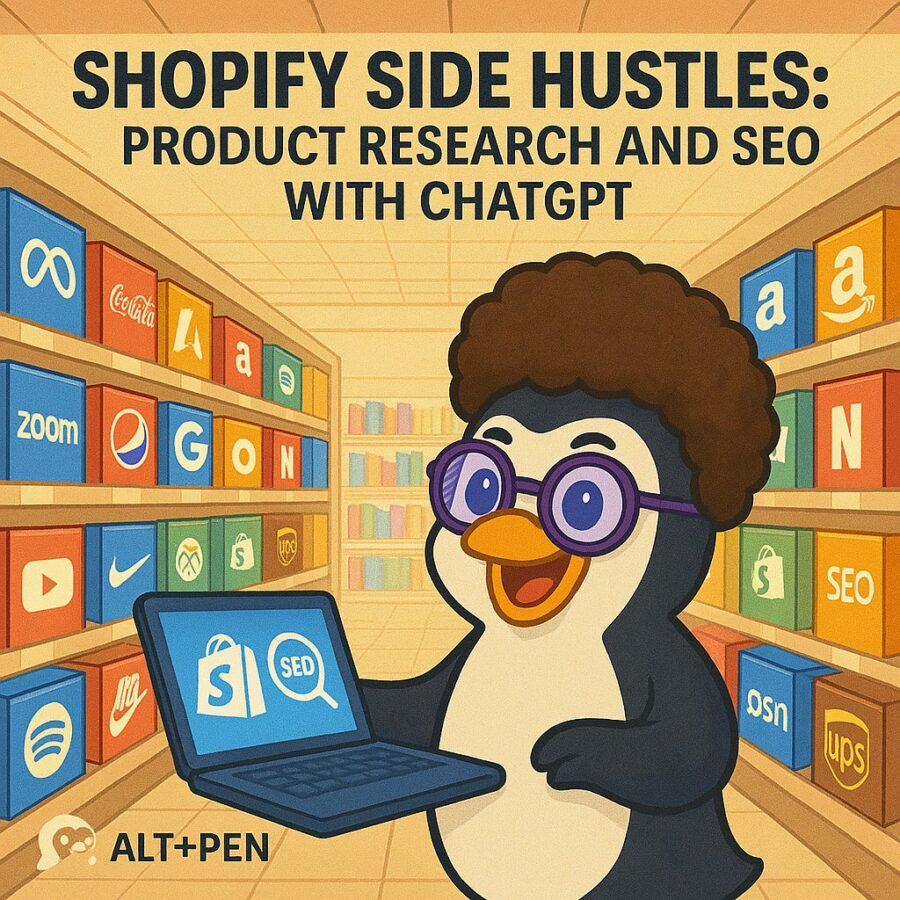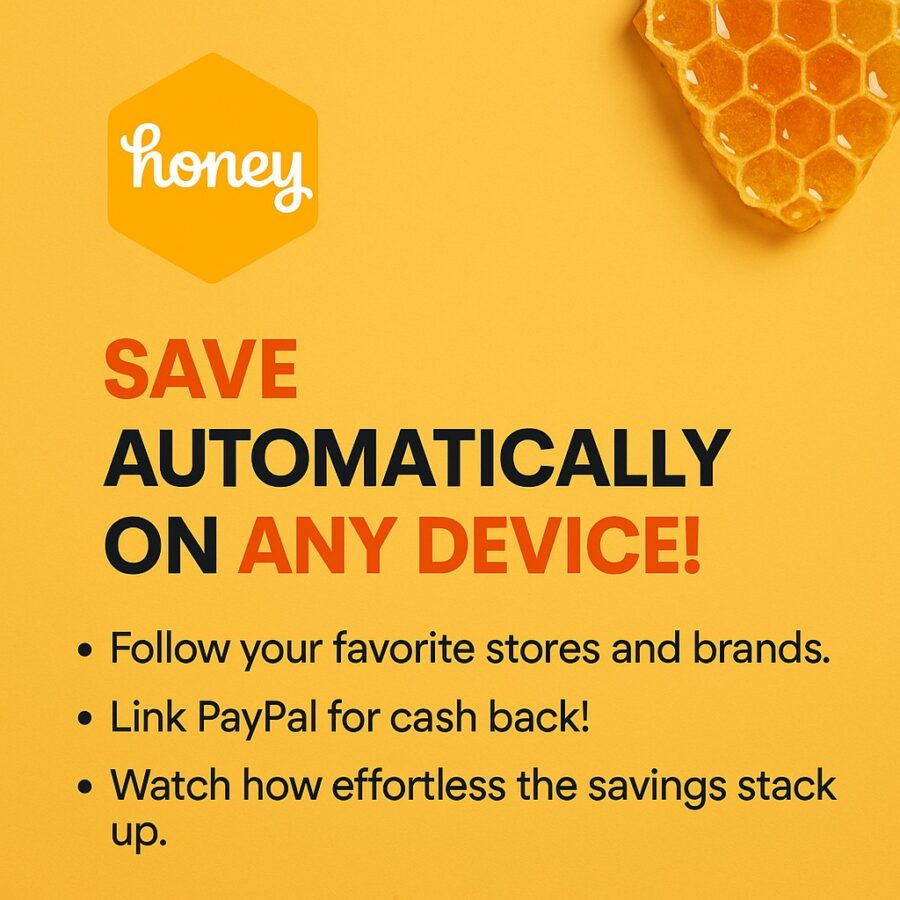Views: 0
A stranger on a train asked me how to pick a winning Shopify product without gambling. I told him the same thing I tell students. Do not chase lightning. Build a weather station. Shopify Side Hustles: Product Research And SEO With ChatGPT is that weather station. You will combine fast product scouting, clear store structure, and search signals that compound over time. No smoke. No gimmicks. Just a weekly rhythm that finds useful products, writes pages that rank, and earns while you sleep.
The blueprint at a glance
Shopify Side Hustles: Product Research And SEO With ChatGPT works because each step is small and repeatable. You will:
- Use ChatGPT to turn market noise into a short product brief.
- Validate demand with free, public data.
- Map one keyword cluster per product or collection.
- Draft a product page and a supporting blog post with clean on-page SEO.
- Add structured data, review signals, and internal links.
- Track performance and adjust weekly.
Keep your stack simple. Shopify for the storefront. Google Search Console for diagnostics. Google Merchant Center for free product listings. A small set of prompts to accelerate research and writing. Shopify’s own guidance and Google’s SEO Starter fundamentals will keep you inside best practice, not hype. (Shopify)
Step 1: Turn chaos into candidate products
Good product ideas leave footprints. People search, ask questions, compare options, and complain about pain points. ChatGPT is your vacuum for those footprints. Give it tight instructions and short inputs. It will not replace judgment. It will compress hours of browsing into a useful brief.
Prompt: For the niche “{NICHE},” collect 5 product candidates. For each, give: primary use case, top 3 buyer objections, average price range, seasonality guess, and 3 keywords with probable buying intent. Return a 150-word table summary.
You are not done. You have a hypothesis. Now make it testable.
Affiliate Link
See our Affiliate Disclosure page for more details on what affiliate links do for our website.
Step 2: Validate demand with public signals
You will sanity-check each candidate using three fast sources.
Search interest and seasonality. Use Google Trends to see whether interest is rising, falling, or seasonal. Pair that insight with your own calendar. If interest spikes every November, perfect for gift bundles or limited runs. Shopify’s guides spell out how to use Trends to find and validate products in near real time, which is ideal for Shopify Side Hustles: Product Research And SEO With ChatGPT. (Shopify)
Search intent. Scan the current results for your seed keyword. If you see product and collection pages ranking, that is buying intent. If you see informational guides, you need content to earn trust before the sale. Shopify’s 2025 SEO playbook explains this purchase-intent check clearly and shows how to place keywords in titles, descriptions, H1s, and URLs. (Shopify)
Feasibility. Gut-check shipping, margins, and returns. Heavy and fragile items are riskier for a new store. Trendy, low-margin goods invite price wars. Pick something you can describe with authority and support with clear photos and answers.
Prompt: Analyze “{PRODUCT}.” Classify the main SERP intent as Transactional, Comparison, or Informational based on the top 10 Google results. List 3 ranking pages of each type and note patterns in titles and meta descriptions. Return a short recommendation for page type to build first: Product, Collection, or Blog.
Step 3: Build a keyword cluster the practical way
Clusters stop you from chasing 100 random keywords. Each product or collection gets one cluster with three layers:
- Head term. The obvious phrase that buyers use.
- Modifiers. Color, size, use case, material, audience.
- Questions. Care, compatibility, troubleshooting, comparisons.
Your target is not to stuff words. Your target is to match buyer language and intent. Google’s Starter Guide remains the plain-English source for where to place keywords and how to structure pages that search engines can crawl and index. Follow the basics, because basics win. (Google for Developers)
Prompt: Create a keyword cluster for “{PRODUCT OR COLLECTION}.” Include 1 head term, 6 transactional modifiers, and 6 informational questions. Map each to page types: Product, Collection, or Blog. Output a tidy table and a 120-character meta title for the main page.
Step 4: Draft the product page that actually sells
Your product page does three jobs. It answers questions faster than a competitor. It gives search engines clean signals. It builds trust with specifics. Shopify Side Hustles: Product Research And SEO With ChatGPT relies on a simple layout.
Above the fold. Clear title with the head term. Price. Variant options. One-sentence value proposition. Star rating if you have reviews.
Details section. Bullets for benefits. A short paragraph for features. A FAQ with three blunt questions. Care instructions. Shipping and returns.
Proof section. Reviews, UGC, or a quick comparison table. Never fake social proof. It harms trust and breaks policy.
SEO checklist for the page. Put the main phrase in title, H1, URL, and the first 100 words. Add descriptive alt text for images. Avoid keyword stuffing. Shopify’s 2025 SEO best practices spell out where to place keywords, how to optimize collection pages, and why structured data and Merchant Center matter. Use those as your guardrails. (Shopify)
Prompt: Write a Shopify product page for “{PRODUCT}.” Tone is clear and human. Include: 1 H1 with the exact head term, 5 bullets for benefits, a 120-word description, a 3-question FAQ, and a short care or sizing note. End with a 2-line shipping and returns summary. No fluff. No bold claims.
Affiliate Link
See our Affiliate Disclosure page for more details on what affiliate links do for our website.

Step 5: Create the supporting blog asset
Even with buying intent, many visitors want context. A single helpful article can pull long-tail traffic and pass authority to your product and collection pages.
Use the dependency pattern for clarity:
- Claim. One sentence thesis.
- Evidence. A data point or comparison.
- Implication. What it means for the buyer.
- Action. A single step with a link to your product or collection.
A short how-to or comparison guide works well. Link to your collection with natural anchor text. Shopify’s SEO checklist highlights internal linking as a ranking lever. Treat it as part of your craft, not a chore. (Shopify)
Prompt: Draft a 900-word article supporting “{PRODUCT OR COLLECTION}.” Use the dependency pattern for each section. Include one mini comparison table with 3 alternatives and when to pick each. Add one callout box that answers a common pre-purchase question. Link back to the collection once in the Action line only.
Step 6: Add structured data and surface in shopping experiences
Structured data is how search engines understand your product details at a glance. Shopify themes already output Product schema for price and availability. You can enrich it with review markup and shipping details where supported. Google’s documentation shows how structured data helps search engines interpret your content and can enable rich results. Shopify’s guide also points you to Google Merchant Center and the organic product grids that now take real estate on results pages. That is free exposure if your data is accurate. (Google for Developers)
Action list. Verify your sitemap is accessible. Submit in Search Console. Connect your catalog to Google Merchant Center and sync your product feed. Shopify’s SEO checklists and help docs walk through indexing, sitemaps, and site structure. Follow them line by line. (Shopify)
Step 7: Respect helpful content rules while using AI
You can use ChatGPT to research and write, yet you must ship people-first pages. Google rewards original, helpful content regardless of how it is produced, as long as it demonstrates experience, expertise, authoritativeness, and trust. It also penalizes scaled, low-quality content and site reputation abuse. Keep your pages specific, truthful, and grounded in your own product knowledge. Cite claims. Avoid thin, generic rewrites. Read Google’s March 2024 policies and their helpful content guidance to stay inside the lines while you build Shopify Side Hustles: Product Research And SEO With ChatGPT. (Google for Developers)
Step 8: Build one tight collection page for compounding traffic
Collections rank better than lone product pages for many queries. Organize related products into a collection when at least three to five items fit a specific search demand. Give the collection a descriptive title and a short intro paragraph with the main phrase. Link the collection in your nav so it is never orphaned. Shopify’s 2025 guidance is explicit here. Focus resources on getting collection pages to rank. (Shopify)
Prompt: Create a Shopify collection description for “{COLLECTION}.” 120 words. Begin with the exact collection phrase. Add 3 bulleted benefits and 1 sentence about shipping or returns. Do not repeat the collection phrase more than twice.
Affiliate Link
See our Affiliate Disclosure page for more details on what affiliate links do for our website.

Step 9: Tight on-page SEO, minimal theme bloat
Shopify Side Hustles: Product Research And SEO With ChatGPT plays the long game. You do not need heavy apps to rank. You need clean templates.
- One H1 per page. Titles between 50 and 60 characters.
- Meta descriptions near 155 characters that promise a benefit.
- Alt text that describes the image, not the keyword.
- Short, readable URLs.
- Core Web Vitals in the green. Compress images and lazy-load where possible.
- Avoid duplicate content. Write unique descriptions for variants.
- Create a simple internal link map. Collections link to products. Blog posts link to collections and specific products. Shopify’s checklists reinforce these basics, and they work. (Shopify)
Step 10: Measure what matters weekly
Dashboards invite vanity. Keep it simple. Open Search Console once a week.
- Queries growing or dropping.
- Pages earning impressions but few clicks. Improve titles.
- Pages with clicks but weak conversions. Improve offer and proof.
- Merchant Center feed errors. Fix fast so your free product listings remain eligible. Shopify’s guidance covers Search Console setup and sitemap submission if you need a refresher. (Shopify)
Prompt: From this Search Console export, list pages with impressions above 500 and CTR below 1.5 percent. For each, draft 3 new title ideas under 60 characters and 3 meta descriptions under 155 characters. Align each pair to the primary query shown.
A 14-day launch plan for Shopify Side Hustles: Product Research And SEO With ChatGPT
Day 1. Pick your niche and budget constraints. Run the product brief prompt. Shortlist three items.
Day 2. Validate with Trends and a quick SERP scan. Kill weak candidates.
Day 3. Build a keyword cluster for the winner. Map head term, modifiers, and questions.
Day 4. Draft the product page. Use bullets and a blunt FAQ.
Day 5. Add Product schema, images, and alt text. Submit your sitemap in Search Console.
Day 6. Create a supporting article. Use the dependency pattern. Link to the collection once.
Day 7. Build a small collection if you have three or more related items. Place it in navigation.
Day 8. Connect Google Merchant Center and sync your product feed.
Day 9. Collect the first review if possible. Publish a short how-to reel and link to the product.
Day 10. Tighten titles and meta descriptions. Remove any weak sections.
Day 11. Add one internal link from your blog to the collection. Add one from the collection to the product.
Day 12. Check Search Console coverage and fix errors.
Day 13. Publish a second article that compares alternatives. Stay honest.
Day 14. Review clicks, impressions, and feed status. Adjust titles and test one new angle.
The goal is not a viral spike. The goal is a steady climb from searchers who want to buy.
Case study sketch: from zero to first organic sales
A creator launched a small store selling organizer inserts. The team applied Shopify Side Hustles: Product Research And SEO With ChatGPT across one collection.
- The Research prompt returned “planner refill A5” as the head term.
- Google Trends showed stable interest with January spikes.
- SERPs for “A5 planner refill for sale” showed collection pages on top.
- The team built a collection with five SKUs, an A5 sizing note, and a FAQ.
- The supporting article covered paper weight, hole patterns, and printer compatibility.
- Merchant Center synced the feed. Structured data validated in Search Console.
- Within three weeks, the collection earned impressions on long-tail terms and two sales came from a comparison query. That is not fireworks. It is proof. The right structure compounds.
Affiliate Link
See our Affiliate Disclosure page for more details on what affiliate links do for our website.
Common pitfalls to dodge
Skipping unique descriptions. Copying manufacturer text leads to thin, duplicate pages. Write your own sentences. Shopify’s ecommerce SEO lists unique copy and product visuals as essentials. (Shopify)
Ignoring collections. Lone product pages struggle to rank for broader terms. Group items and optimize the collection page. Shopify’s 2025 best practices tell you to focus resources there. (Shopify)
Scaling generic AI text. Google’s March 2024 guidance penalizes scaled, low-quality content and site reputation abuse. Human check every page. Keep it helpful and specific. (Google for Developers)
Forgetting structured data and Merchant Center. Rich results and organic product grids increase visibility. Connect your product feed and keep it clean. (Shopify)
Title, meta, and on-page examples you can borrow
Product title example: A5 Planner Refill 2025, 100 GSM Paper, Pre-punched 6-Ring
Meta description example: A5 planner refill with smooth 100 GSM paper and clean templates. Fits standard 6-ring binders. Ships fast.
Collection intro example: A5 planner refills for work and study. Choose daily, weekly, and grid layouts. High-contrast print, bleach-free paper, and quick shipping.
Blog H1 example: A5 Planner Refills Compared: Paper, Punch Patterns, And Layouts
QA checklist before you publish
- H1 includes your head term once.
- URL is short and readable.
- Title under 60 characters. Meta description under 155.
- Images compressed. Alt text describes the image.
- Product schema present. No errors in Rich Results test.
- Internal links from article to collection. From collection to product.
- Returns and shipping explained in plain language.
- Review or testimonial block in place.
- FAQ with three questions based on objections from your research brief.
- Search Console and Merchant Center connected and clean. Shopify and Google provide step-by-step guides that cover these basics. (Shopify)
Affiliate Link
See our Affiliate Disclosure page for more details on what affiliate links do for our website.

Your steady path forward
There is nothing mystical here. Shopify Side Hustles: Product Research And SEO With ChatGPT is a patient system. You scout demand, pick one cluster, and publish pages that help buyers decide. You respect Google’s guidelines. You use structured data and Merchant Center to widen your reach. You link your content together in a way that makes sense to humans, not bots. Then you improve one variable each week.
If you keep the rhythm, your small store turns into a durable side hustle. Not by catching lightning, but by running the weather station with care.
Sources
- Google Search Central. “SEO Starter Guide.” Eligibility, crawling, indexing, on-page basics. (Google for Developers)
- Google Search Central. “March 2024 core update and new spam policies.” Guidance on scaled content abuse and site reputation abuse. (Google for Developers)
- Shopify Blog. “5 ecommerce SEO best practices for 2025.” Keyword placement, collection pages, structured data, and Merchant Center sync. (Shopify)
Shopify Help Center and SEO Checklist. Indexing, sitemaps, internal links, product copy, and visuals. (Shopify Help Center)




